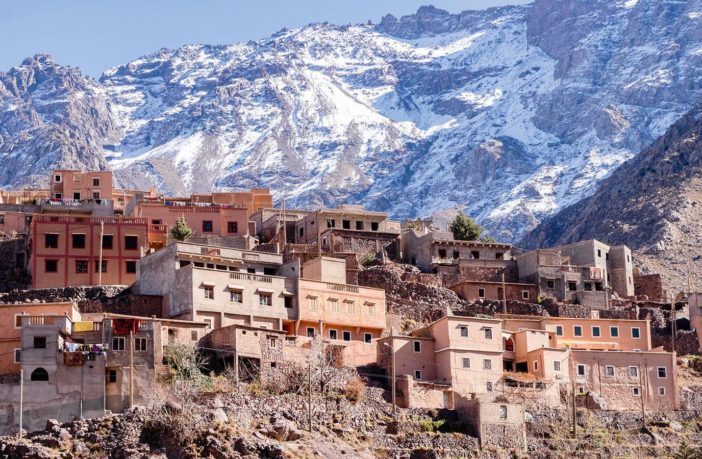National Geographic
by Alice Morrison
The Atlas mountains are jagged granite and limestone, reaching high into the bluest of African skies. PHOTOGRAPH BY GETTY
A recent expedition took me 1,000 miles across the magnificent and terrifying Sahara, crossing endless golden dunes, facing weeks of Moon-like barren wastes, watching hundreds of camels gallop towards a well for water. Unforgettable experiences all on a grand scale, which have left an indelible mark on me. But the place that’s changed me most is the small family compound I lived in, high up in the High Atlas mountains of Morocco.
Adventure had first brought me here, to the tiny Amazigh (Berber) village of Imlil. I’d signed up to run the Everest Trail Race, a six-day ultramarathon around Everest, and I needed to train. Imlil lies at an altitude of 1,750 metres, surrounded by a smorgasbord of peaks exceeding 3,000 metres, culminating in Mount Toubkal, North Africa’s highest mountain. Perfect for trail running and walking.

Alice Morrison is the presenter of BBC Two’s Morocco to Timbuktu: An Arabian Adventure, author of Adventures in Morocco, and creator of the Alice in Wanderland podcast.PHOTOGRAPH BY ALICE MORRISON
These mountains are jagged granite and limestone, reaching high into the bluest of African skies. Dark green juniper trees are scattered across them, and wild thyme, mint and camomile grow everywhere, throwing up clouds of scent when disturbed by footfall. Terraced farms use every inch of fertile land, and the rich soil of the valley produces plum, cherry, apple and peach trees, which dazzle you with their blossom in spring.
The village itself comprises one main street, which has a feel of the Wild West with its soundtrack of braying, clattering mule traffic. The traditional, low-lying, red-clay buildings are perched on the mountain slopes, built into the rock. My home is in a family compound — a douar — a small, pink building, accessed by a mule track overlooking a sea of walnut trees. Three families, about 25 people, plus cows and chickens live in the douar with me, our houses giving on to a communal courtyard. Life in Morocco is segregated by gender, so my home life is with the women. Initially, I worried how I’d fit in — I fail on every level as a female here, where home and children define your worth. I have no husband or children, and I can’t even cook couscous.







